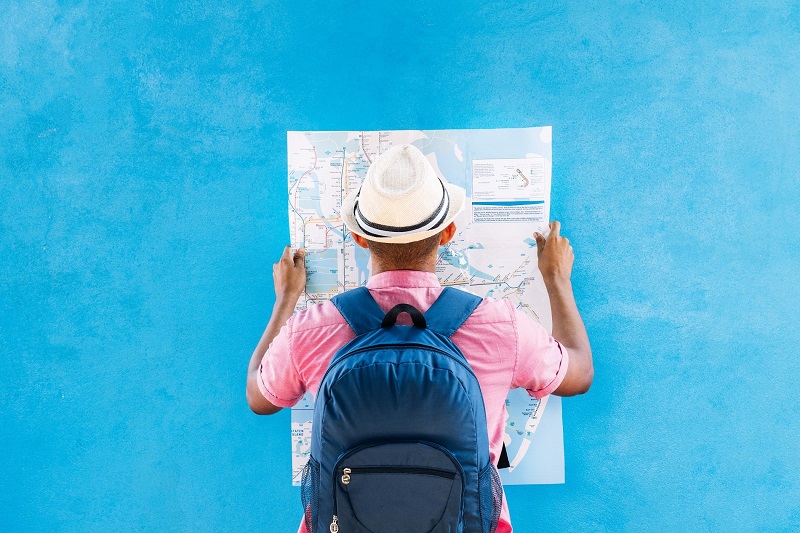There’s something magical about tropical adventures—the sun, the sand, the vibrant cultures. But let’s be honest, lugging around a heavy suitcase can quickly turn that magic into a hassle. I’ve been there, and trust me, packing light makes all the difference.
Imagine strolling through a bustling market or hiking to a hidden waterfall without being weighed down. It’s liberating! In this article, I’ll share some essential tips to help you pack smart and light for your next tropical getaway. Whether you’re a seasoned traveler or planning your first trip, these tips will ensure you have everything you need without the extra baggage.
Understanding Tropical Climates
Tropical climates are characterized by hot temperatures, high humidity, and significant rainfall. According to the Köppen climate classification, these areas generally have temperatures above 64.4°F (18°C) throughout the year. Understanding this climate is essential for packing wisely.
Temperature and Humidity
In tropical regions, temperatures often fluctuate between 77°F (25°C) and 95°F (35°C). High humidity levels can make the heat feel even more intense. For example, the Amazon Rainforest and Southeast Asia both experience high humidity, often above 75%. This leads to more sweat and the need for breathable clothing.
Rainfall Patterns
Many tropical areas have two main seasons: wet and dry. The wet season, also called the monsoon season, can see heavy daily rainfall. For instance, Bali’s wet season runs from November to March, with frequent, intense showers. To stay comfortable, it’s crucial to pack waterproof gear like ponchos and quick-dry fabrics.
Sun Exposure
Tropical regions receive intense sunlight due to their proximity to the equator. UV radiation is stronger and can lead to sunburns quickly. Places like Hawaii and the Caribbean have high UV indexes year-round. To protect my skin, I pack broad-spectrum sunscreen, sunglasses, and a wide-brimmed hat.
Wildlife and Insects
Tropical climates host diverse wildlife, including many insects. Mosquitoes, which can carry diseases like dengue fever and malaria, are common in areas such as Brazil and India. Packing insect repellent and wearing long sleeves and pants during dawn and dusk can help reduce insect bites.
Coastal vs. Inland Areas
Coastal areas often have cooling sea breezes but can also be more humid. Inland areas might have higher temperatures and less wind. For example, coastal Thailand can be humid yet breezy, while inland cities like Chiang Mai can feel hotter. Understanding these differences helps me choose suitable clothing and gear.
Local Customs and Dress Codes
Understanding local customs concerning dress is essential. In many tropical regions, lightweight, modest clothing is not only practical but respectful. For instance, in places like Malaysia and Indonesia, modest attire is preferred even in hot climates. Packing light, breathable fabrics that cover my shoulders and knees shows respect for local culture.
Water Activities and Safety
Tropical destinations often offer water activities like snorkeling and diving. Areas like the Great Barrier Reef in Australia and the Maldives are popular for these activities. Packing essentials like waterproof pouches for electronics and sturdy water shoes ensures I’m prepared for both the fun and safety aspects.
By understanding tropical climates, I can pack light while ensuring I’m prepared for the various environmental and cultural aspects of my destination.
Choosing the Right Clothing
Packing the right clothing is crucial for tropical adventures. Opting for lightweight, versatile garments can make travel more enjoyable and less cumbersome.
Breathable Fabrics
In tropical climates, lightweight and breathable fabrics ensure comfort. Cotton, linen, and moisture-wicking materials like polyester help manage sweat and keep cool. According to the CDC, these fabrics reduce the risk of heat-related illnesses by promoting airflow and evaporation.
Breathable fabrics prevent rashes and irritation by allowing skin to breathe. For example, cotton shirts and linen pants offer comfort and style, while performance fabrics in activewear wick moisture away, keeping dry during excursions. Natural fibers like bamboo are another eco-friendly, breathable option for travelers.
A few well-chosen items made from these fabrics can cover various activities. Cotton tees for sightseeing, linen outfits for dinners, and moisture-wicking activewear for hiking ensure preparedness without overpacking.
Versatile Pieces
Picking versatile clothing items helps minimize baggage. Clothes that suit various occasions or can be layered reduce the number of items needed.
Multi-functional garments like sarongs, which can be used as beach cover-ups or skirts, exemplify versatile pieces. A lightweight dress that transitions from daywear to dinner attire is another excellent choice. Convertible pants that zip off into shorts serve both hiking and casual settings.
Neutral colors allow versatile matching. By selecting tops and bottoms that mix and match, a few key pieces can create numerous outfits suited for different activities. A neutral-colored, moisture-wicking shirt, paired with convertible pants, prepares for numerous scenarios while conserving precious luggage space.
Layering Strategies
Effective layering strategies prepare for varying tropical climate conditions. Temperatures can fluctuate, and layering ensures comfort across changes. Start with a moisture-wicking base layer to manage sweat and stay dry.
Mid-layers, like lightweight fleece, provide warmth during cooler evenings or in air-conditioned locations. For example, a fleece jacket layered over a cotton tee handles both heat and chill. Lastly, pack a waterproof outer layer to withstand tropical rains. A packable rain jacket offers protection without bulk.
Choosing layers that pair well with each other maximizes outfit combinations. This strategy minimizes the need for additional garments while ensuring readiness for different weather conditions. A base layer, mid-layer, and rain jacket together create a flexible, efficient wardrobe for a tropical adventure.
Essential Travel Gear
Essential travel gear makes all the difference in a tropical adventure. Here are key items to ensure your trip is comfortable and enjoyable.
Compact Luggage
Choosing compact luggage simplifies traveling. Small, lightweight suitcases and backpacks allow for better mobility and easier handling in crowded places. I recommend using a carry-on-sized bag, which usually measures 22 x 14 x 9 inches. This size fits most airline requirements and eliminates the hassle of checking in luggage.
Opt for a bag with multiple compartments. This helps organize items better, making them easily accessible. Look for durable materials like high-denier polyester or ballistic nylon. These materials withstand the rigors of travel and protect your belongings. Rolling bags with sturdy wheels and a telescoping handle provide convenience, especially when navigating through airports or hotels.
Quick-Dry Towels
Quick-dry towels are a practical addition to your travel gear. They are lightweight, compact, and dry faster than regular towels, making them ideal for humid climates. I’d suggest a microfiber towel, which absorbs water efficiently and dries quickly. These towels come in various sizes, so you can choose one based on your needs.
Pack at least one medium-sized towel (about 40 x 20 inches) for daily use and a smaller one for quick drying after water activities. Microfiber towels are also odor-resistant, ensuring freshness during your trip. They fold down to a fraction of their size, saving space in your luggage. Remember to rinse and hang them out to dry after each use for better hygiene.
Lightweight Footwear
For tropical adventures, lightweight footwear is essential. Breathable shoes help keep your feet cool and comfortable in hot weather. I recommend packing a pair of sturdy sandals with good arch support for walking and a pair of water shoes for aquatic activities. Sandals made of EVA or similar lightweight materials are durable yet comfortable.
Water shoes with rubber soles provide grip and protection, whether exploring rocky shores or wet paths. Choose footwear that can be easily cleaned and dried, as tropical environments can be muddy and wet. Packing these options ensures versatility and comfort throughout your trip.
Health and Safety Items
Keeping health and safety in mind’s crucial when preparing for a tropical adventure. This section covers key items that protect against the sun, tend to minor injuries, and keep pesky insects at bay.
Sun Protection
Tropical regions often mean intense sun exposure, so packing sun protection’s essential. Sunscreen with an SPF of at least 30 shields against harmful UV rays. Apply it to all exposed skin 15 minutes before heading outside and reapply every two hours, especially after swimming or sweating. A broad-brimmed hat provides additional protection for your face, neck, and ears. Sunglasses with UV protection shield your eyes from harmful rays. Lightweight, long-sleeved shirts and pants made of UPF fabric offer extra defense against sunburn. Consider packing a portable sunshade if planning extended outdoor periods; it provides a quick reprieve from direct sun.
First Aid Kit
A compact first aid kit is indispensable for addressing minor injuries during your trip. Include adhesive bandages of varying sizes for cuts and blisters. Add antiseptic wipes and ointment to clean and disinfect wounds. Pack pain relievers like ibuprofen or acetaminophen for headaches or minor aches. Include antihistamines to manage allergic reactions and anti-diarrheal medication for unexpected digestive issues. A small pair of tweezers can help remove splinters or stingers, while sterile gauze pads and medical tape secure larger wounds. Don’t forget motion sickness tablets if you’re prone to travel-induced nausea. Finally, include a basic health guide to assist with common ailments.
Insect Repellent
In tropical environments, insects, especially mosquitoes, can be more than just a nuisance. Packing an effective insect repellent with DEET or picaridin greatly reduces the risk of bites. Apply repellent to all exposed skin and reapply as directed on the label. Treating clothing, shoes, and gear with permethrin offers additional protection. Consider packing citronella candles or portable mosquito coils if planning to spend evenings outdoors. Mosquito nets are vital if staying in areas with high mosquito activity; they provide a barrier during sleep. Lastly, itch relief cream or antihistamine lotion helps soothe bites if they occur.
Packing Light Techniques
Embarking on a tropical adventure requires strategic packing to keep things light and manageable. These techniques will help you optimize your packing and ensure a stress-free journey.
Rolling Clothes
Rolling clothes saves space in your luggage and minimizes wrinkles. I recommend laying each item flat first. Then, tightly roll each piece into a compact cylinder. This method works especially well for t-shirts, shorts, and lightweight dresses. Additionally, rolling smaller items together, like underwear and socks, can save even more space. Packing rolled clothes in layers helps keep your luggage organized and makes it easier to find specific items without disturbing the rest of your bag.
Using Packing Cubes
Packing cubes are a game-changer for organized packing. These zippered fabric bags categorize and compress clothing, keeping items neat and accessible. I like to designate one cube for tops, another for bottoms, and a smaller one for underwear and accessories. Using cubes not only maximizes space but also simplifies unpacking, as you can transfer the cubes directly into hotel drawers. They also ensure that your clothes stay compressed, making more room for souvenirs and other items you pick up during your trip.
Minimizing Toiletries
Toiletries often take up more space and weight than necessary. I suggest decanting liquids into travel-sized containers of 3.4 ounces or less to adhere to TSA regulations. Choose multipurpose products when possible, like a combined shampoo and conditioner. I always bring solid toiletries, such as bar soap and solid shampoo, to save space and avoid spills. Consider the humid climate when packing skincare items; lightweight moisturizers and sunscreens that are non-greasy work best. Additionally, items like toothpaste tablets and compact toothbrushes can further reduce the space taken by your toiletry bag.
Conclusion
Packing light for tropical adventures doesn’t just make travel easier; it makes it more enjoyable. By focusing on breathable fabrics, versatile clothing, and essential gear, we can stay comfortable and prepared for anything the tropics throw our way. Understanding the climate and respecting local customs ensures we have a respectful and enriching experience.
Remember to protect yourself from the sun and insects while keeping your luggage manageable with smart packing techniques. With these tips, you’ll be ready to fully immerse yourself in the beauty and excitement of your tropical destination. Happy travels!










0 Comments